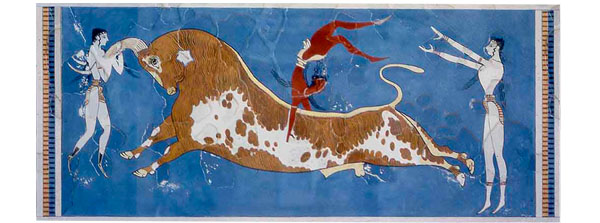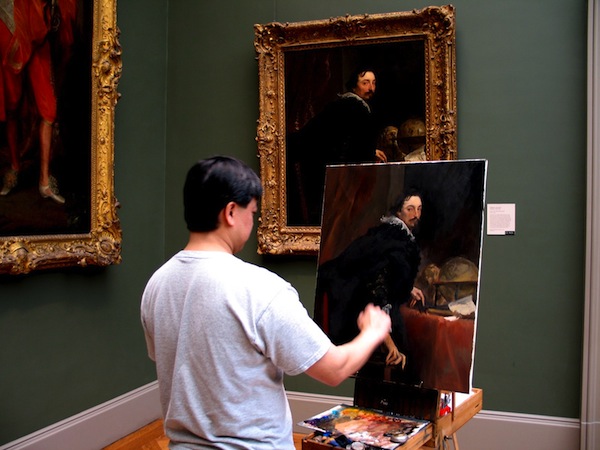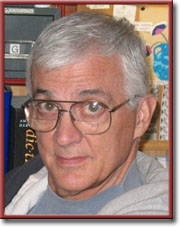Multiplying One by Two: Imitation

Skip the B.S.
By Skip Eisiminger

“In the 1970s, every male swimmer wanted to be Mark Spitz. In the 1972 Olympics, Spitz had won seven gold medals, breaking seven world records in the process. After the games, a Russian coach asked the American swimmer if his famed mustache didn’t slow him down. ‘No,’ replied Spitz with a smile, ‘as a matter of fact, it deflects water away from my mouth [which] allows my rear end to rise . . . .’ The following year, most male Russian swimmers sported a mustache in international competition.”—By Skip Eisiminger
“Imitation is suicide.”—Ralph Waldo Emerson
“Go, and do thou likewise.”—Luke 10:37
 CLEMSON South Carolina—(Weekly Hubris)—6/16/2014—The earliest extant examples of two- and three-dimensional art were meticulous copies drawn from life. The more realistic the bison painted on the cave walls of Lascaux in 30,000 BC, the more bison spirit was tamed, and the greater the probability of a successful hunt, or so they may have believed. About the same time, the more realistic the carvings of pregnant women, the greater the probability that real women would reproduce, or so they may have believed.
CLEMSON South Carolina—(Weekly Hubris)—6/16/2014—The earliest extant examples of two- and three-dimensional art were meticulous copies drawn from life. The more realistic the bison painted on the cave walls of Lascaux in 30,000 BC, the more bison spirit was tamed, and the greater the probability of a successful hunt, or so they may have believed. About the same time, the more realistic the carvings of pregnant women, the greater the probability that real women would reproduce, or so they may have believed.
Often, however, life imitates art. I don’t know of a better illustration of this point than Morgan Robertson’s novel Futility, published in 1898, 14 years before the Titanic sank. In the novel, an ocean liner attempting to cross the North Atlantic from the UK to the US in record time smashes into an iceberg, drowning most on board. The name of this fictitious ship is the Titan. Moreover, like its doomed sister, the Titan sinks in April, has three screws to drive it at a similar top speed, is about 800’ long with a similar displacement tonnage, carries too few lifeboats for about the same number of passengers, and is advertised as “unsinkable.” Now, imagine Mr. Robertson’s face when he read of reality stealing his plot. To his credit, he never tried to capitalize on this remarkable series of coincidences.
But sometimes, life just imitates life. There is, for example, a beetle that has learned to imitate the mating code of a female firefly. Thus, an aroused male, blinded by his passion, may find himself in the maw of his “lover.”
Finally, there’s the long tradition of art imitating art. For all we know, the “Woman of Willendorf,” alluded to above, may have been a copy of an older fertility fetish but, generally, the newer the work, the more certain historians can be of the derivation.
Take the Basilica of Our Lady of Peace which was “personally financed” by President Félix Houphouёt-Boigny at a cost of $300,000,000. This Roman Catholic structure on the plains of the Ivory Coast is so large that St. Peter’s Basilica, once the world’s largest church, would fit inside. But grandeur was not “Papa” Houphouёt’s only aim. He was so intent on verisimilitude that he imported 30 acres of marble from the same quarries Michelangelo had used. Moreover, he was so determined that his people would remember his magnanimity, he had himself enshrined kneeling before Jesus in one of the basilica’s largest windows. In 1989, the doors were opened to worshippers in a country that is predominately Muslim.
Works such as this pile in the bush are a form of self-colonization. On a smaller, personal scale, the basilica reminds me of Peter Singh who once performed songs like “My Poppadum Told Me” under the stage name, “the Pakistani Elvis.” Thanks to his American mentor, who occasionally appears to him in a dream, Singh claims he has stopped drinking alcohol and smoking marijuana.
Indeed, casting the same shadow as one you admire can be a rewarding exercise. The problem for acolytes like Mr. Singh is that there are an estimated 85,000 Elvis impersonators across the globe, 28 in Vegas alone. In an era when over a hundred adults are making a living impersonating Marilyn Monroe, and Charlie Chaplin can do no better than fourth place in a “Charlie Chaplin Look Alike Contest,” and Graham Greene has to settle for second place in a “Graham Greene Parody Contest,” there’s something wrong with imitation as a lifelong philosophic formula. As Cary Grant, born Archibald Leach, said, “Everybody wants to be Cary Grant. Even I want to be Cary Grant.”
In the 1970s, every male swimmer wanted to be Mark Spitz. In the 1972 Olympics, Spitz had won seven gold medals, breaking seven world records in the process. After the games, a Russian coach asked the American swimmer if his famed mustache didn’t slow him down. “No,” replied Spitz with a smile, “as a matter of fact, it deflects water away from my mouth [which] allows my rear end to rise . . . .” The following year, most male Russian swimmers sported a mustache in international competition.
As with most paradigms, there are extremes which call the middle into question. Examples of the imitation paradigm gone appallingly wrong include nearly 300 copies of the Tylenol poisonings and 26 suicides following “The Deer Hunter.” On the good side, there’s the case of 115 British soldiers surrendering in the American Revolution when they were fooled by a “Quaker cannon,” a hollow log painted to look like gun metal and mounted on a carriage.
At this point, you may be asking, “Is cubic zirconia the equivalent of a diamond?” Yes and no, I would equivocate. Would you object if I told you that in “Curse of the Pink Panther,” David Niven’s last film, his voice was dubbed by Rich Little, the comic impersonator? Niven was deathly ill and unavailable for any retakes, but to me the film is still a gem.
Benjamin DeMott argued that the literature teacher’s foremost duty is to “harry imaginations into constructing the innerness of other lives.” I have long thought that going to the theater, the ballet, the opera, the movies, or reading fiction is the best way for humans to learn empathy. I thought that because by identifying with everyone from Mother Goose to Huck Finn, I learned empathy, and no amount of reading undramatized philosophy or theology has convinced me otherwise.
The risk, of course, lies in fixating on a mentor, theory, or style and never developing the uniqueness that is every human’s birthright. I’ve read that traditional Indian singers drone behind their masters for years. At some point, the apprenticeship ends, and the protégé comes to the fore. I would wish that for each of us.

Visiting museums, I often like to take a seat behind a young artist copying an Old Master. I pretend to be studying the Vermeer or the Rubens on the wall, but I’m really trying to get a sense of whether this apprentice to the dead is developing or just copying the dusty work in the gilded frame. She alone is she, for that is nature’s gift, but it’s left to each to establish a brand.

Note: The image used to illustrate this column derives from http://woonartworks.blogspot.com/2007_03_01_archive.html.
2 Comments
Will
Lordy, Skip! I came in tonight from a drunken wake . . . to find THIS waiting for me? I am in stitches …rofflemao, or whatever the twitter-kids type these days. Splendid!
Skip Eisiminger
You are too kind, Will. I’m glad you liked it. Skip